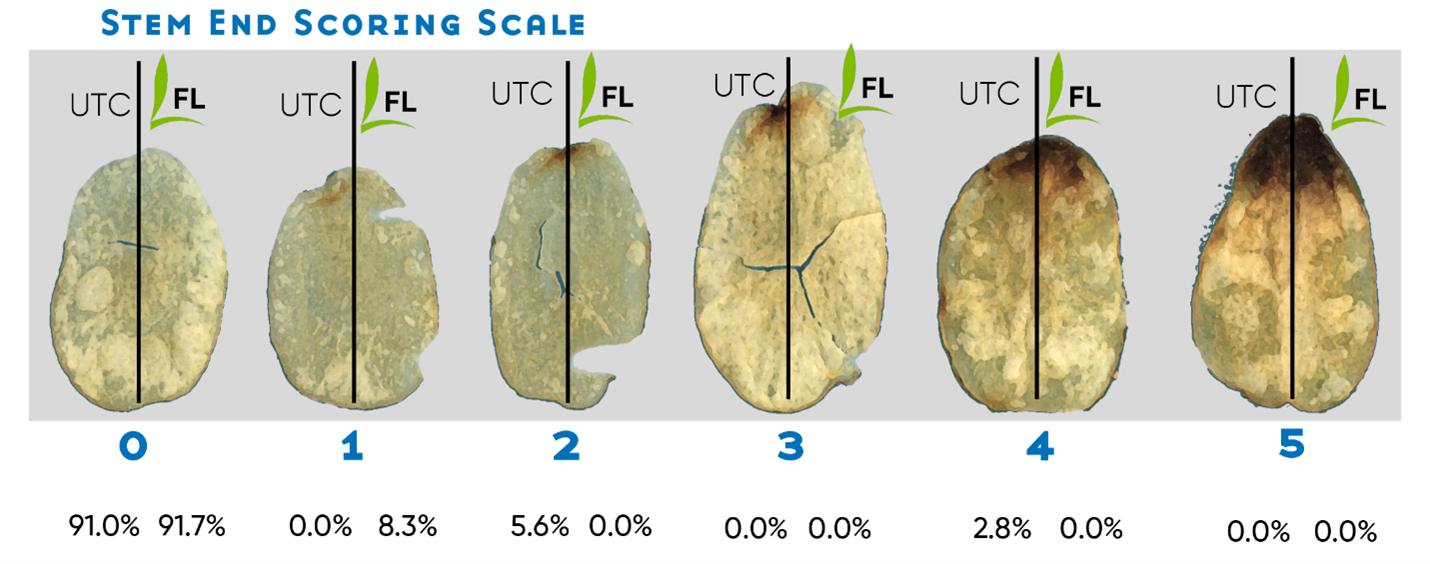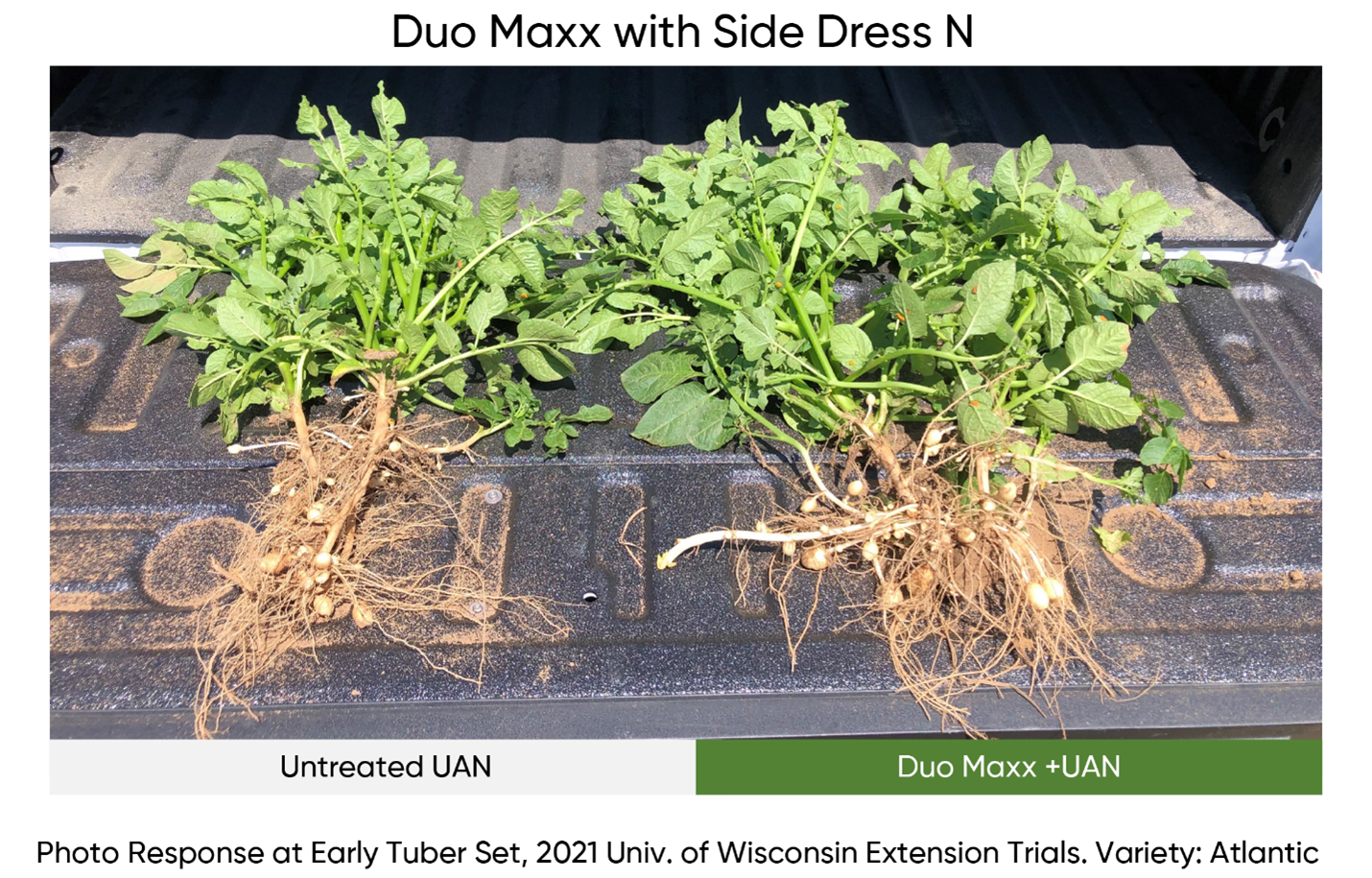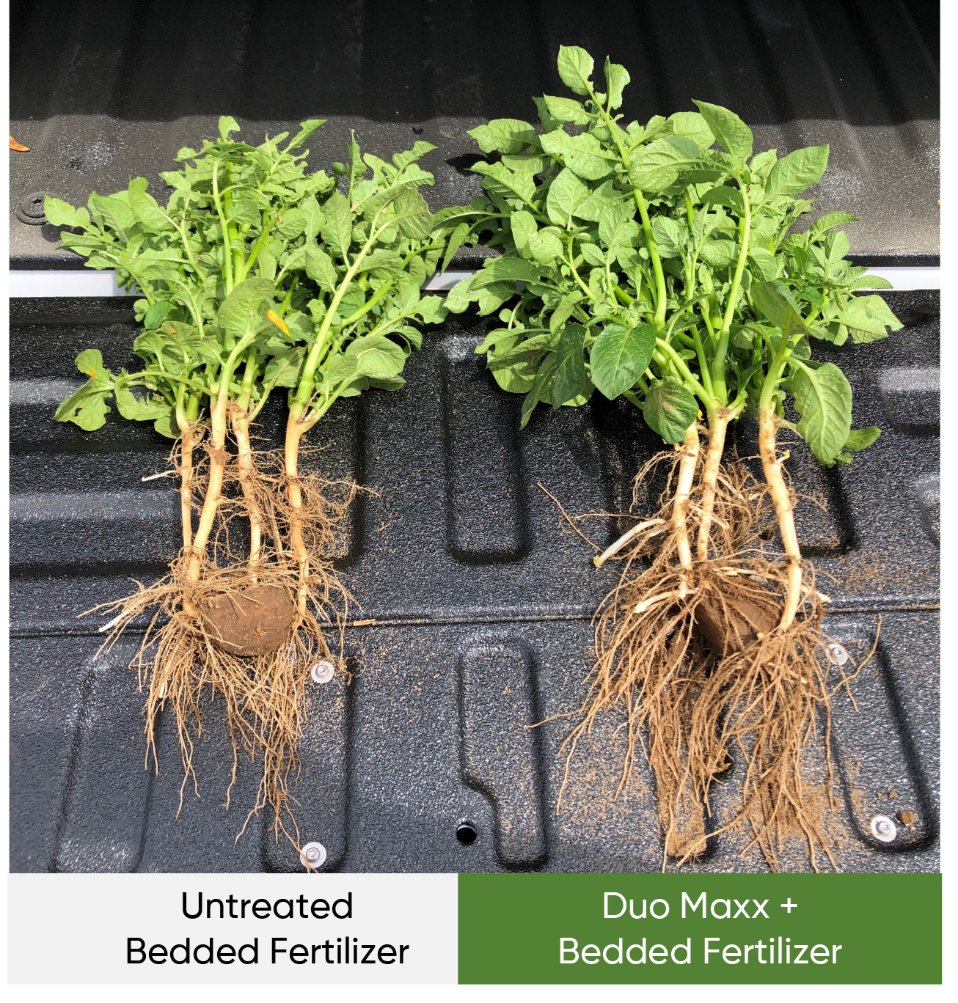{Sponsored Content} Potatoes dominate more acreage in the United States than the leading three vegetable crops combined (USDA NASS, 2017). They are an incredibly important food resource around the world and a staple to the average American diet. Growing potatoes embody a distinct set of standards regarding maintenance, tuber set, and environmental stresses. The crop requires a custom approach on the plant nutrition front in order to achieve market quality standards.
Potato Crop Characteristics
Similar to most crops, potatoes have specific demands in nutrient ratios and planting techniques. They are grown in deep, heavily tilled, lighter texture soils that are prone to nutrient leaching and loss. The plant’s tendency for heavy feeding is attributed to its shallow root system that hinders nutrient reach and uptake. With distinct nutrient requirements at various stages of development, high input costs can create a hurdle on the grower’s quest for a return on investment.
On the other hand, the potato industry has faced immense challenges over the past years due to weather, which has severely impacted the overall quality of the potato plant. More and more farmers are encountering the astounding benefits of biological additives that can make a significant difference in tuber count, total potato hundredweight, and defect prevention.
Timac Agro’s Approach to Potato Nutrition
Timac Agro USA strives to meet the individual needs of both farmers and crops. For the past couple of years, potatoes have been one of Timac’s primary research crops in top potato-producing states like Michigan, Wisconsin, Pennsylvania, and Florida.
Find out more at Timac Agro's website. Below you can see a snippet of some results we have seen in the field:



